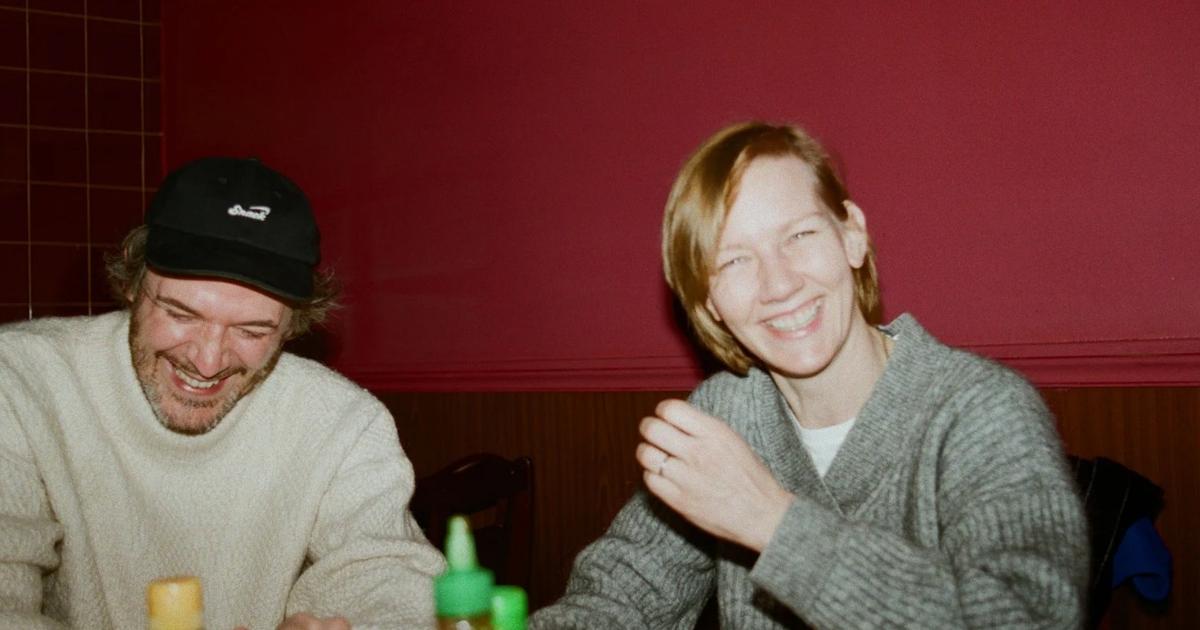When the lights go out, the body rests and the cities that are not New York sleep, the story quietly follows its course.
It will not enter textbooks, it will not ask itself in exams, but it does not stop writing for that.
Dreams are part of history.
German journalist Charlotte Beradt must have sensed this when she began to collect the dream stories of her compatriots, the year Hitler came to power.
Among them he captured the one of a doctor who sees the walls of his office disappear while, in the distance, a loudspeaker throws loud prohibitions and intrusions on privacy derived from the phrase “in accordance with the decree of the 17th of this month on the abolition from the walls ...! ”.
And that of a housewife who welcomes a Gestapo agent into her kitchen, who suddenly begins to interrogate the oven.
To his surprise, he begins to speak through the cover and recounts the jokes and offenses that the family has made against the government there.
These
dreams
are subjective stories, fantastic no doubt, but not at all arbitrary;
they constitute a reliable testimony of the psychological wound caused by the Third Reich, they are the documentary trace of a historical alert and fear.
Download the latest issue of BUENAVIDA for free
It took Beradt seven years to secretly collect more than 300 stories, according to the editor Jacobo Siruela in a fascinating exploration of dreams that he titled
The world under the eyelids
(Atalanta, 2010).
Thanks to the internet, it took a Finnish team of scientists just one week to collect almost three times as much in spring, researchers from the University of Naples Federico II collected about 800 testimonies in a month and Harvard University psychologist Deirdre Barrett has been wearing more 10,000 since the end of March, some of which have been partially published in the work
Pandemic Dreams
(Oneiroi Press, 2020) and collected in this report.
All the investigations reveal the existence of a collective dream phenomenon, they all collect a history of the pandemic that has turned out to be especially vivid and intense.
People had evolved to have invisible 12-foot-radius [3.6-meter] bubbles that acted as force fields, and we couldn't touch another person again until the human race was extinct. Sorting information to face the future is one of the functions of dreams, and as the pandemic progresses, more stories about the future appear, sometimes dystopian, according to psychologist Deirdre Barrett in Pandemic Dreams. Both facts can be related. |
One of the great peculiarities of 2020 dreams is that they have broken a trend.
Yes, each era has its style in fashion, food and the way of dreaming.
Sandra Giménez, neurophysiologist at the Sleep Unit at Hospital Sant Pau in Barcelona and a self-declared optimist by nature, is concerned about the current trend in rest.
"We sleep little and we are more stressed, with the feeling of not reaching everything, we wake up due to stress ...", he says.
That translates into a short, gray history book, somewhat monotonous.
If the coronavirus had followed the normal pattern of crises, nothing would have changed with confinement.
However,
the monochrome book has suddenly become a thick, full-color volume
.
All because of REM sleep.
Rest is divided into different phases, and REM is the one most associated with dream experiences.
The brain goes in and out of it cyclically throughout the night, and dreams in this phase are characterized by more emotions, more movement, more color and fewer inhibitions.
They are wild dreams and, among the wildest, those at the end of the night take the cake.
The explanation is that each REM phase gets a little longer in each cycle: if the first of the night lasts only a few minutes, the last can reach half an hour.
That is when the type of hypervitamin dreams that increased during confinement emerged because, despite the increase in nightmares and sleep interruptions, the total duration was longer than before.
According to the Finnish study, which has seen the light in the
Frontiers in Psychology
magazine
this month, the increase was 54.2%, other studies give different but also significant figures and Giménez admits that there are patients who have assured him that his dream has improved.
There were more dreams at the end of the night.
When dreams are permeated with intense emotions, the brain looks for images to help represent them. Masks, in all their imaginable forms, have played a leading role in the pandemic. Other objects are more original. My husband and I are doing a test to see if we have the virus. They are exactly the same as homemade white plastic pregnancy tests. We both have a pink line: positive. I am taking a covid-19 test. But it's a multiple choice test and I can't get any answers right. They tell me that I have failed and that I have the disease. |
Deirdre Barrett, the Harvard psychologist, has studied the dreams of 9/11 survivors, Kuwaitis during the First Gulf War, and prisoners from World War I.
He knows well the trauma and the dream metaphors that trigger disasters: they are usually expressed with tsunamis, tornadoes, hurricanes, earthquakes, fires ... Barrett has detected all of them in his investigation of the pandemic, although with shades that only these times can contribute: a person he dreamed that President Trump announced that there were no tsunamis, that they were only "fake news."
But some accounts are more than a pandemic version of previously explored territories.
“The way in which the mind processes things in dreams is remarkably consistent throughout the history of man, even in content they resemble those of other crises.
However, there are a few different themes in my survey, like many bug attack dreams;
many things that together can harm or kill you is a particularly suitable metaphor for the virus,
”interprets the psychologist.
And he adds: "I am also seeing invisible monsters, which have not been symbols in other crises either."
The pages of the pandemic's dream story are especially haunting and emotional, drenched in the drip of trauma filtered from waking.
The stories collected by the scientists paint the story of a scared and anxious humanity in the face of crowds, social distance, symptoms, the serious situation of their elders and even the apocalypse (these themes are among the most common of all those detected in the Finnish study, which has relied on computational analysis to "get rid of categories established 'a priori").
For his part, Barrett has collected all kinds of dreams: there are those of masks, in which the education of children remains in the hands of parents until they come of age, of guilt for surviving, marked by loneliness (who confined themselves alone they thought of other people while one of those locked in company discovered a secret room in their house, to which only she could enter).
But you have to read between the lines.
"I think dreams are ourselves thinking in a different state of mind over our usual thoughts and concerns, in a more visual and intuitive way, less linear and verbal," says Barrett.
In other words, this story is not just one of fear,
anxiety
and death;
it is also that of a humanity learning to change course, the testimony of a collective effort to close one chapter and open the next.
A good part of pandemic dreams are the story of the emotional cost of adaptation.
Because what happens during conscious life has a continuity in the unconscious.
The phenomenon is known as the continuity hypothesis and is related to a way that the mind has at night digesting the information it receives during the day, selecting the useful and pruning the expendable.
"One of the major functions of sleep is to consolidate learning", emphasizes Giménez, coordinator of the Cognition and Sleep Working Group of the Spanish Sleep Society.
What happens is that the lessons are sometimes difficult.
When I woke up, all I could remember is that I had done something wrong or violated a rule, and that my punishment was having to shake hands with an infinite line of them. Scientists call idiopathic nightmares based on waking experiences. The memories of these bad dreams have probably served to take into account the new rules of coexistence and safety. "Having all the same dreams, the same concerns, also involves a social practice that is necessary for survival," argues neurophysiologist Sandra Giménez. |
The "pious custom" of the US General George Patton of "calling his personal secretary at any time of the night, when a dream suggested a new war strategy", according to
The World Under Eyelids
, is out of reach of the science.
If, as they say, Gandhi dreamed of passive resistance before using it to win his country independence, only he knew it (it is what dreams have, they are still the exclusive heritage of the dreamer).
But who doubts the influence of Martin Luther King's 'I have a dream'?
1963 was not the end, but the beginning.
The waking story leaves its imprint on the mind, but what happens when the light goes out also has some force to change the course of the story, beyond metaphor.
"What we think during the day influences dreams, and their content, although to a lesser extent because it is remembered worse, also
influences our daytime thoughts and emotions
," says Barrett.
I was a giant antibody.
I was so angry about covid-19 that it gave me super powers, and I started to move from one place to another attacking all the viruses that I found.
I woke up so energetic!
, tells one of the stories collected by the researcher.
With the overwhelming taste of anxiety on the lips of millions of people, it is hard to reject the idea that the weight of billions of small decisions, together, changes even slightly the course of events.
But there cannot be a completely clear cause-effect relationship;
you cannot know exactly what others have dreamed of.
On the contrary, it seems to be taken for granted that a single dream can improve the lives of millions of people.
They say that August Kekulé saw the molecular structure of benzene in a dream, that Frederik Banting developed a technique to isolate insulin in bed, and that Otto Loewi
won the Nobel Prize in Physiology or Medicine for an experiment he designed while he was sleeping
, with which he demonstrated that Nerve impulses could be transmitted by chemicals.
Barrett says that she did it on a substance that is inhaled to coat the mucous with a substance that neutralizes the virus.
Surreal?
No, the dream about musical proteins that cure the virus they sent you is, yours is not far from reality;
shortly after, it was published that the CSIC is working on an idea consisting of an antibody cream to coat the inside of the mouth and that, if it worked, would prevent infection for a short period of time.
A casuality?
Of course, but it will be true that you can daydream.
The polar bear problem
Fedor Dostoevsky raised a problem: try not to think of a polar bear and you will see the bloody animal every minute, he came to say.
Deirdre Barrett, a psychologist at Harvard University, interprets that thinking about anxiety-provoking topics before bed is the best way to appear in dreams.
And it reformulates the problem by stating that focusing on something that induces you to calm down before sleeping can be a way to reduce the anxiety that has so marked the dreams of the pandemic. Barrett also recovers from the Greek temples the term "dream incubation ”To refer to a technique with which to suggest oneself to channel their dream adventures.
For example, as images are very powerful in this mental dimension, thinking about a person's face or concentrating on a photograph can make you end up dreaming about them, he says.
PHOTOS: HENRIK SORENSEN / D-KEINE / GETTY











